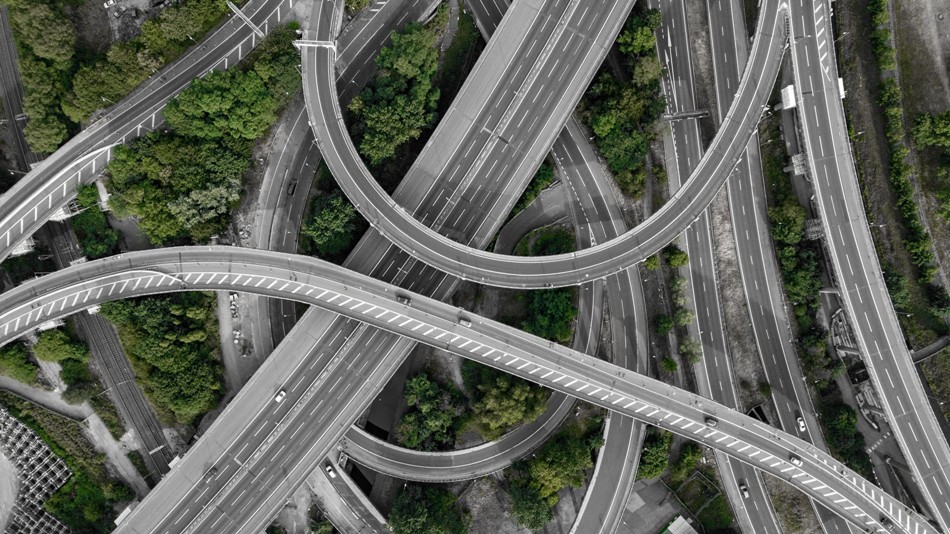Dhanada K Mishra
The American Society of Civil Engineers (ASCE) just released its quadrennial Infrastructure report card for 2021 on March 3. It assessed the state of infrastructure of the United States of America in 17 different categories such as aviation, roads, bridges, dams, energy, ports, solid waste etc. It estimated a grade point average of C- which is only slightly better than the GPA calculated in 2017 which was D+. ASCE is the country’s oldest national civil engineering organization formed in 1852 representing more than 150,000 civil engineers in private practice, government, industry, and academia with chapters all over the world. They are dedicated to advancing the science and the profession of civil engineering, and protecting public health, safety, and welfare.
Interestingly the first such survey was conducted in 1988, and the grade then was slightly better at C. In the intervening period the best grade has been no better than a D+. While the best grade A signifies ‘exceptional and fit for future’, C stands for ‘mediocre requiring attention’ while F or fail grade stands for ‘critical, unfit for purpose’. Thirty-one industry experts with help of ASCE staff prepare the report considering the following criteria – capacity, condition, funding, future need, operation & maintenance, public safety, resilience and innovation. They base their assessment on all publicly available data and reports, expert consultations before assigning the grades.
In the 2021 report card the best grade of B was earned by rail while the worst D- was earned by transit infrastructure meant for public transportation for commuters. The report identified a funding gap of 2.59 trillion US dollars over the last 10 years which can be bridged by increasing investment from 2.5% of GDP to 3.5%. It also recommended that among other things, action must prioritise life cycle cost assessment as a basis for project decisions, promote sustainability of the triple bottom line of economic, social and environmental benefits and encourage innovation. The integration of new technology such as big data analytics and internet of things to have sensors and drones for smart inspection based predictive maintenance to increase service life. From the point of view of extreme weather events that significantly disrupts critical infrastructure as was evident in the recent snow storm in Texas, the report recommended a focus on resilience in design. Such infrastructure can recover quickly from an extreme event so that loss and damage can be minimised.
As infrastructure becomes a key driver for post-Covid recovery worldwide, the focus is on ‘building back better’. This official buzzword of the new Biden administration in the USA is now a global industry buzzword. It is driven by the demand that as economies open up again and large construction projects are taken up to drive growth, focus must be on resilience, sustainability and the triple bottom-line, especially the social impact. This imperative is now visible in every country and region of the world and it couldn’t have come sooner given the race against time to contain the unfolding climate crisis.
Comparing the USA with a small autonomous city like Hong Kong may be unfair, but can be useful given that Hong Kong sets the standards along with world class cities like Singapore, in infrastructure. Hong Kong sets the gold standard as far as civil infrastructure is concerned. While the idea of an infrastructure report card is yet to take shape for Hong Kong, it has, however, received international recognition, such as World No.1 for infrastructure competitiveness in the WEF’s Global Competitiveness Report 2017 – 2018. With over 7.4 million inhabiting a land area of just 1,073 square kilometres, Hong Kong is one of the world’s most densely populated cities, each square kilometre accommodating over 6,800 citizens on average. Meeting the needs for mobility, economic productivity, livability and sustainability has propelled the city to envision and realise infrastructure unique feats. In its vision 2030 describes the vision of Hong Kong integrating itself as the central driver in the Pearl River Delta (PRD) Mega city that includes Shenzhen and Guangzhou with ambitious infrastructure development out of which the high speed rail connection is already in place. Having lived and worked both in the USA and Hong Kong, I would relatively give Hong Kong a grade of B+ if not A- for its infrastructure compared to the C- for the USA.
The concept of an infrastructure report card would be highly relevant for India as it embarks on large scale construction of infrastructure at a break-neck speed. It is one area in which the current government seems to be performing well. To the best of the author’s knowledge however, detailed information on the status, quality and condition of our infrastructure is neither systematically collected nor easily available, being largely under government’s control. One happy exception is the Indian Bridge Management System (IBMS), albeit developed by a group of consultants under the Ministry of Transportation which now has almost 162,000 bridges in it. The Integrated Database on Infrastructure Projects (IDIP) on the other hand had data on 250 roads initially across the country, built on a public-private partnership (PPP) model, developed by an initiative of IIT Madras. Launched in 2019, it aims to help enhance the efficiency of infrastructure development. Due to lack of concrete data and assessment, it is hard to imagine what grade one would give Indian infrastructure, but given the grade of the USA, one can only think of something much lower than C- and a big regional variability in that.
India in general and Odisha in particular would do very well to undertake comprehensive periodic assessment of the infrastructure sector based on publicly available comprehensive data which will be essential if sustainable economic growth were to be realised.
The author is a professor of civil engineering at KMBB College of Engineering under Biju Patnaik University of Technology currently working in Hong Kong. He can be reached by email at dhanadam@gmail.com
